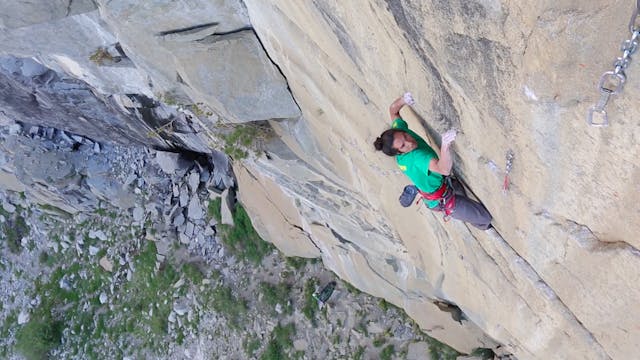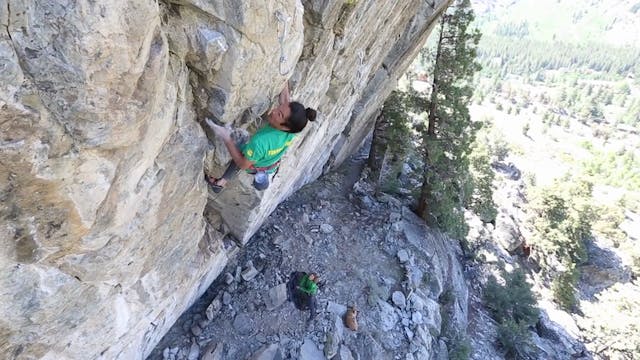Sport Climbing: 3. Quickdraw Considerations
Sport Climbing
•
1m 54s
In this video we review quickdraw considerations for the leader while sport climbing.
- Carry enough draws for the route plus two extra “oh crap” draws AND extras for the anchor if needed. Typically ten to twelve draws are plenty, plus any gear needed to rappel, lower, clean, or top rope the route.
- Usually the smaller quick draw dog bones in the 10 to 15cm range are fine as sport routes don’t tend to wander too much.
- If needed, bring longer draws or shoulder length slings -- trick tripled to extend bolts. For more info on how to trick trippel your slings, please see our video on “Trad Climbing: Draw Considerations” [hyperlink to video]”
- If possible, use “key lock” carabiners on both the bolt ends and the rope ends of the quickdraw, to avoid snagging and getting hung up. Key lock carabiners feature a notchless nose that is less likely to snag on bolt hangers and gear loops.
- A straight gate carabiner is ideal for the bolt side of the draw, while a bent gate carabiner aids in cleanly clipping the rope end of the draw.
- Align the carabiners on the draw’s “dog bone” – or nylon center – so both gates are facing the same direction. This can help minimize the draw twisting and unclipping from the bolt.
- Using a rubber or plastic carabiner “keeper” on the rope side of the draw makes clipping easier and more efficient. Most modern draws and dogbones come with these rubber keepers.
- Clip your draws to the front gear loops on your harness and try to have them evenly distributed on both sides.
- As mentioned in our “Clipping Considerations” video, when clipping a quickdraw to the bolt, clip so the rope runs over the spine of the carabiner—not the gate—as you climb above it (this means the spines should be on the same side as the direction you will be climbing above the bolt). This helps ensure the rope runs over the spine in the event of a fall, thus minimizing the chances of the rope unclipping from the draw.
- Also mentioned in our “Clipping Considerations” video, be sure you don’t “back clip.” Back clipping happens when the climber clips the rope in “upside-down.” In the event of a fall, the rope can unclip from the quickdraw. Instead, the rope should run in this order: Belayer to rock, through quickdraw, to climber.
To avoid back clipping, remember the rule “The rope runs from the rock to the climber.” You know you are clipping correctly if the rope runs up and out into space -- versus in, towards the rock.
We hope you found this video helpful. Feel free to comment below with questions or thoughts!
Please remember, climbing is inherently dangerous. Climb at your own risk.
Up Next in Sport Climbing
-
Sport Climbing: 4. Crimping Techniques
In this video we review proper crimping techniques used while sport climbing. As you progress in sport climbing, certain routes will require you to use impossibly small holds. Proper crimping technique is vital to sending your sport climbing project—and to keep your tendons from exploding!
Tw... -
Sport Climbing: 5. Dynamic Movement
In this video we review dynamic movement. Dynamic movement, in contrast to static movement, is a very gymnastic way of climbing. It includes the flashy move known as the “dyno”—an explosive way to gain upward movement.
It is often wise to move statically and methodically up the wall, staying ... -
Sport Climbing: 6. Falling While on Lead
In this video we review falling considerations for the lead climber in sport climbing.
Sport climbing presents a unique opportunity for the climber to experience, practice and learn how to fall in a somewhat controlled environment. Bolts may be stronger than some gear placements, and many spor...


